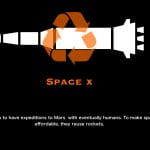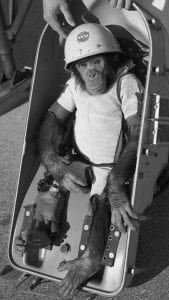It’s that time again where we have just finished a unit and it’s time to reflect. In this unit we delved into history that covered the 1960’s to today. We used the song “We didn’t Start the Fire” by Billy Joel for inspiration for this project. As we watched the music video in class I recognized many events that were mentioned which grabbed my attention. If you have ever listened to this song, you will discover that the lyrics are just a vast list of significant events branching between 1949 and 1989.
Our class driving question:
What makes an event significant?
Our task for this project was to choose one topic from the song and create an artifact arguing the significance of the event and eventually orchestrate a five minute presentation for the class. The goal was to state that your topic was the most significant out of all the events. We had complete control of this project meaning we determined our own driving question, thesis and artifact.
There were over 100 topics to choose from which made it hard to narrow my top choice down. I selected the Space Monkey. To be honest I really didn’t know much at all about the space monkey or space in general. I was extremely curious how a monkey could be so significant. Here is my driving question for my research.
How did the first Space Monkey revolutionize space technology and create a path for future space explorations?
Once we determined our topic it was time to do A LOT of research. As I said earlier, the whole purpose was to state why and what makes our event significant. To start our research off, we wrote a brief summary of the event and why we picked our topic (initial interest). As I said earlier, I chose the topic mainly because I wanted to more about how a monkey was so significant.
The next step was to do some intense research. Our task was to write 5-10 pages of research. I wanted to show the impact of the space monkey by relating it to contemporary events. That being said I did an extent amount of research on NASA’s current space missions such as the Mars 2020 Rover. Once we had an exceeding understanding of our topic, we started to generate a thesis and focus on the significance. There are many aspects that make an event significant it’s almost like a checklist it has to meet certain standards in order for it to be significant. I chose to focus on durability, quantity and relevance because I believe these factors are the most important factors.
After some research I was able to establish a thesis:
The first Space Monkey revolutionized space technology and lead to the first man in space in 1961. This was a factor that carved a path for future explorations.
As soon as the research was done, it was time to start developing our artifact. We could pretty much do anything for the artifact, it could be a video, sculpture, etc. I was pretty stuck on what to do so my teacher inspired me to create an info graphic consequently that is what I created.
To create my artifact took multiple drafts and revisions. It was a challenge to make it appealing to the eye as well as representing the significance using images and diagrams instead of text. I chose to stick with three colours, white, black and orange to avoid busyness.
Here is my final product:

My info graphic tells the story of Albert I and how he revolutionized space technology. (Made with Keynote)
The quick rundown of the monkey:
The story of the space monkey is a sad one…
Let me introduce Albert I, the first monkey launched into space in 1948 on a V-2 Blossom rocket. Yes y ou probably guessed it, he never made it through space flight he reached an altitude of 63km and died of suffocation. Following Albert I, many more monkeys followed but many of them died due to space flight malfunctions and other health factors.
ou probably guessed it, he never made it through space flight he reached an altitude of 63km and died of suffocation. Following Albert I, many more monkeys followed but many of them died due to space flight malfunctions and other health factors.
Even though these monkeys were dying, they collected crucial data that scientists could use to advance space technology. If a human was sent into space, many  human lives would be lost also space programs wouldn’t get a great reputation for experimenting on humans with an unknown territory of space.
human lives would be lost also space programs wouldn’t get a great reputation for experimenting on humans with an unknown territory of space.

The data collected enabled to send humans into space, resulting with the first man on the moon.
From there space programs were able to start thinking about missions to Mars. The Mars 2020 Rover is going to be launched July 2020. The main purpose of the Rover is discover life on Mars. It will collect  samples of soil and rock from Mars surface and in future missions the samples will be sent back to Earth. I got very interested in this topic and watched documentaries and read multiple articles so I could talk for hours about this mission! Go check out the NASA website for more information about the mission.
samples of soil and rock from Mars surface and in future missions the samples will be sent back to Earth. I got very interested in this topic and watched documentaries and read multiple articles so I could talk for hours about this mission! Go check out the NASA website for more information about the mission.
 Because of Albert I Space X’s goal is to fly humans to other planets, including Mars. Again there is so much interesting information on Space X and how they are creating reusable rockets, but it would take up pages so go check out their website!
Because of Albert I Space X’s goal is to fly humans to other planets, including Mars. Again there is so much interesting information on Space X and how they are creating reusable rockets, but it would take up pages so go check out their website!

My info graphic goes in one big circle and it all comes back to him. Without the monkeys, missions that are happening today wouldn’t be possible. Testing with live animals tested whether humans would survive space and allowed scientist to advance technology in doing so.
Basically we had five minutes to argue to the class why our topic is the most significant out of all the events mentioned in the song. I found out that five minutes is NOT a lot of time so I had to make my presentation more concise and to the point. My presentation went pretty good, I thought my artifact really represented the significance. Verbally I could have communicated better, although there was a technical issue and I couldn’t use my notes (I learned to not rely on technology)! With a short time limit it was hard not to talk fast to get in all of your points, I should have spent longer cutting down my script so I wasn’t rushing. Even though the presentation could have been improved, I certainly think that I did a good job of visualizing the significance using the arrows and diagrams. Overall this project was definitely one of my favorites simply because we had so much freedom. It made me have to be more independent since I was the one driving my project. I had to make sure that I put time a side in order to meet all of the deadlines and complete the milestones.
After watching all of the presentations, the events that seemed the most significant to me where the ones that included statistics and numbers, quantity. To add to that the ones that were related to present day absolutely proved the significance, durability. In fact durability is for sure the most important factor, it has to have left a legacy on future generations to be considered significant.
Work Cited:
“First Monkey in Space.” First Monkey in Space – Albert Monkey, www.monkeyinspace.net/first-animal-in-space/first-monkey-in-space/. Jan 11, 2020
Morton, Ella. “The Amazing Tale of a Twice-Married Monkey Astronaut.” Slate Magazine, Slate, 3 Nov. 2014, slate.com/human-interest/2014/11/miss-baker-the-first-monkey-to-survive-a-trip-to-space.html. Jan 10, 2020
“Animals in Space.” NASA, NASA, history.nasa.gov/animals.html. Jan 13, 2020
Greenfieldboyce, Nell. “After 50 Years, Space Monkeys Not Forgotten.” NPR, NPR, 28 May 2009, www.npr.org/templates/story/story.php?storyId=104578202. Jan 13, 2020
“Overview.” NASA, NASA, mars.nasa.gov/mars2020/mission/overview/. Jan 12, 2020
“Microphones.” NASA, NASA, mars.nasa.gov/mars2020/mission/rover/microphones/. Jan 13, 2020
SpaceX. “SpaceX.” SpaceX, www.spacex.com/. Jan 13, 2020
Spacexcmsadmin. “Falcon Heavy.” SpaceX, SpaceX, 16 Nov. 2012, www.spacex.com/falcon-heavy. Jan 9, 2020



